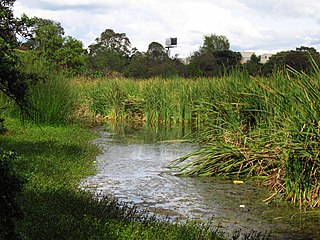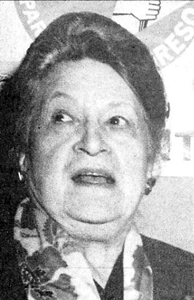
Colombia, officially the Republic of Colombia, is a country mostly in South America with insular regions in North America. The Colombian mainland is bordered by the Caribbean Sea to the north, Venezuela to the east and northeast, Brazil to the southeast, Ecuador and Peru to the south and southwest, the Pacific Ocean to the west, and Panama to the northwest. Colombia is divided into 32 departments. The Capital District of Bogotá is also the country's largest city hosting the main financial and cultural hub, and other major urbes include Medellín, Cali, Barranquilla, Cartagena, Santa Marta, Cúcuta, Ibagué, Villavicencio and Bucaramanga. It covers an area of 1,141,748 square kilometers, and has a population of around 52 million. Colombia is the largest Spanish-speaking country in South America. Its cultural heritage—including language, religion, cuisine, and art—reflects its history as a colony, fusing cultural elements brought by mass immigration from Europe and the Middle East, with those brought by the African diaspora, as well as with those of the various Indigenous civilizations that predate colonization. Spanish is the official language, although English and 64 other languages are recognized regionally.

Department of Cundinamarca is one of the departments of Colombia. Its area covers 22,623 square kilometres (8,735 sq mi) and it has a population of 2,919,060 as of 2018. It was created on August 5, 1886, under the constitutional terms presented on the same year. Cundinamarca is located in the center of Colombia.

Bogotá, officially Bogotá, Distrito Capital, abbreviated Bogotá, D.C., and formerly known as Santa Fe de Bogotá during the Spanish Colonial period and between 1991 and 2000, is the capital city of Colombia, and one of the largest cities in the world. The city is administered as the Capital District, as well as the capital of, though not part of, the surrounding department of Cundinamarca. Bogotá is a territorial entity of the first order, with the same administrative status as the departments of Colombia. It is the political, economic, administrative, and industrial center of the country.

El Dorado International Airport is an international airport serving Bogotá, Colombia, and its surrounding areas. The airport is located mostly in the Fontibón district of Bogotá, although it partially extends into the Engativá district and the municipality of Funza in the Western Savanna Province of the Cundinamarca Department. It served over 35 million passengers in 2019 and 740,000 metric tons of cargo in 2018, making it the second busiest airport in South America in terms of passenger traffic and the busiest in terms of cargo traffic. El Dorado is also by far the busiest and most important airport in Colombia, accounting for just under half (49%) of the country's air traffic.

Gonzalo Jiménez de Quesada y Rivera, also spelled as Ximénez and De Quezada, was a Spanish explorer and conquistador in northern South America, territories currently known as Colombia. He explored the territory named by him New Kingdom of Granada, and founded its capital, Santafé de Bogotá. As a well-educated lawyer he was one of the intellectuals of the Spanish conquest. He was an effective organizer and leader, designed the first legislation for the government of the area, and was its historian. He was governor of Cartagena between 1556 and 1557, and after 1569 he undertook explorations toward the east, searching for the elusive El Dorado. The campaign didn't succeed and Jiménez then returned to New Granada in 1573. He has been suggested as a possible model for Cervantes' Don Quixote.

Aurelijus Rūtenis Antanas Mockus Šivickas is a Colombian mathematician, philosopher, and politician. He has a master's degree in philosophy from the National University of Colombia, and a Honoris Causa PhD from the University of Paris.

The University of the Andes, also commonly self-styled as Uniandes, is a private research university located in the city centre of Bogotá, Colombia. Founded in 1948 by a group of Colombian intellectuals led by Mario Laserna Pinzón, it was the first Colombian university established as nonsectarian. The university was ranked #220 globally and #5 in Latin America by the QS World University Rankings in 2023, placing itself as the top Colombian university.

Hale Johnson was an American attorney and politician who served as the Prohibition Party's vice presidential nominee in 1896 and ran for its presidential nomination in 1900.

The Bogotá River is a major river of the Cundinamarca department of Colombia. A right tributary of the Magdalena River, the Bogotá River crosses the region from the northeast to the southwest and passing along the western limits of Bogotá. The large population and major industrial base in its watershed have resulted in extremely severe pollution problems for the river.
The Cubeo are an ethnic group of the Vaupés Department (Colombia). Cubeo is a generic name that is used in local Spanish and appears in the literature in reference to a social and linguistic group. Although the term does not have any meaning in their language, the Cubeo refer to themselves by that name in interactions with others. There is no common native name, aside from referring to themselves as "people" (pâmiwâ) or, more precisely, "my people" (jiwa). An individual's social identification is based on his or her adscription to a mythical clan forebear whose name is used as an eponym.

Metropolitan Area of Bogotá is the metropolitan area of the Colombian capital city of Bogotá, usually used for statistical analysis or technical use. It is not a formal administrative division and its limits are therefore not defined.
Bogotá is the capital of Colombia.

The Bogotá savanna is a montane savanna, located in the southwestern part of the Altiplano Cundiboyacense in the center of Colombia. The Bogotá savanna has an extent of 4,251.6 square kilometres (1,641.6 sq mi) and an average altitude of 2,650 metres (8,690 ft). The savanna is situated in the Eastern Ranges of the Colombian Andes.
The following radio stations broadcast on FM frequency 104.9 MHz:
Colombia held elections to both chambers of Congress on 14 March 2010. The nationwide constituency for the 102-member Senate was contested by 16 lists, comprising 948 candidates. There are 33 regional constituencies for the Chamber of Representatives, plus a few other ethnic minority constituencies. In all, 282 lists, with 1,533 candidates, contested the 165 seats in the Chamber. Almost 30 million people were registered to vote.

Arthur Matthias Beaupre was an American diplomat. He served in several ambassadorships, including Colombia, Argentina, the Netherlands, Luxembourg, and Cuba.

Wetlands of Bogotá, Colombia are important areas of the capital city, and their development has become increasingly important for the area north of the Andes. A reserve for fauna and flora, the wetlands provide for the preservation and reproduction of a wide variety of mammals, reptiles and birds. These include more than 95 species of migratory birds, as well as many endemic plant species. The wetlands are part of the Bogotá River basin. The wetland complex has been designated as a protected Ramsar site since 2018.

María Currea Manrique was a Colombian feminist, suffragist, politician, nurse and journalist. She was instrumental in pressuring for laws in Colombia which recognized women's right to citizenship, education, and enfranchisement. She was honored as the 1960 "Women of the Americas" by the Organization of American States and received many awards and honors during her lifetime. She was posthumously honored with an award distributed bearing her name each March 8 in honor of International Women's Day to the Colombian woman who has excelled in promoting women's rights in her community.

The Fucha River is a river on the Bogotá savanna and a left tributary of the Bogotá River. The river originates in the Eastern Hills of the Colombian capital Bogotá and flows westward through the city into the Bogotá River. It is one of the three important rivers of the city, together with the Tunjuelo and Juan Amarillo Rivers.
The Soacha River is a river on the Bogotá savanna and a left tributary of the Bogotá River.

















